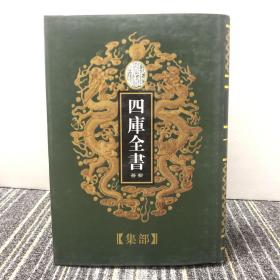
金属与合金的表征
正版现货 可开具图书发票 下单后当天即可发货
¥ 30.4 2.8折 ¥ 108 全新
库存87件
山西太原
认证卖家担保交易快速发货售后保障
作者C. Richard Brundle,Charles A. Evans, Jr[主编]
出版社哈尔滨工业大学出版社
ISBN9787560342832
出版时间2013-11
装帧平装
开本其他
定价108元
货号8169683
上书时间2024-08-31
- 在售商品 暂无
- 平均发货时间 5小时
- 好评率 暂无
- 店主推荐
- 最新上架
商品详情
- 品相描述:全新
- 商品描述
-
导语摘要
布伦德尔、埃文斯、霍罗威主编的这本《金属与合金的表征》是材料表征原版系列丛书之一。全书共分10章,内容包括:界面分析和力学性能,化学性质,矿物加工和金属回收,熔炼和铸造,金属加工,涂层和薄膜,故障分析等。本书适合作为相关领域的教学、研究、技术人员以及研究生和高年级本科生的参考书。
作者简介
Paul H.HOlloway and P.N.Vaidyanathan,Characterization of MetaIs and Alloys provides an introduction to su rface andinterface analysis techniques for spets and educated professional metalIu rgists or scientists.ThiS book iIIustrates with case histories how characterization techniques can be used to determjBe important properties of metals andprovides a systematic approach to the task of correlatjng structure and composition with properties(mechanical,chemical,and physical properties,anddiffusion and phase transformations in metals).This IS a useful reference bookfor practicaI engineers and SCientists who want to learn what can be accomPIished with modern analyticaI techniques,or who want trOubIeshooting adviceon problems involving the structure/property relationships in metals and alIoys.
目录
Preface to the Reissue of the Materials Characterization Series
Preface to Series
Preface to the Reissue of Characterization of Metals andAlloys
Preface
Acronyms Glossary
Contributors
INTRODUCTION
1.1 Purpose and Organization of the Book
MECHANICAL PROPERTIES AND INTERFACIAL ANALYSIS
2.1 Introduction
2.2 Grain Boundary Segregation
2.3 Temper Embrittlement
2.4 Corrosion and Stress Corrosion Cracking
2.5 Hydrogen Embrittlement
2.6 Creep Embrittlement
2.7 Future Directions
CHEMICAL PROPERTIES
3.1 Introduction
3.2 Tools of the Trade--Unique Information Available
3.3 Gaseous Corrosion
3.4 Aqueous Corrosion
3.5 Surface Electronic Structure and Chemistry
3.6 Surface Modification
3.7 Summary
SURFACE AND THIN FILM ANALYSIS OF DIFFUSION IN METALS
4.1 Introduction
4.2 The Mathematics of Diffusion
4.3 Effects of Non-Uniform Cross Sections
4.4 Effects of Finite Thickness
4.5 Analysis Techniques for Diffusion
4.6 Case Studies of Diffusion
4.7 Summary
MINERAL PROCESSING AND METAL RECLAMATION
5.1 Introduction
5.2 Techniques for Mineral Surface Characterization
5.3 Surface Bonding in Mineral-Fluid Systems
5.4 Complementary Composition Analyses of Rough and Polished Surfaces
5.5 Summary
MELTING AND CASTING
6.1 Introduction
6.2 Aluminum-Lithium Alloys
6.3 Aluminum-Magnesium Alloys
6.4 Rapidly Solidified Aluminum Alloy Powders
6.5 Cast Aluminum Alloy Metal Matrix Composites
6.6 Liquid Aluminum Alloys
6.7 Summary
MACHINING AND WORKING OF METALS
7.1 Introduction
7.2 Physical and Chemical Characterization
7.3 Lubrication
7.4 Surface Finish
7.5 Metalworking Example
7.6 Summary
CHARACTERIZATION OF THE CLEANING OF SURFACES OF METALS AND METAL ALLOYS
8.1 Introduction
8.2 Characterization of Cleaning Procedures
8.3 Specimen Handling and Interpretation of Data
8.4 Summary
COATINGS AND THIN FILMS
9.1 Introduction
9.2 Techniques for Creating Coatings and Thin Films
9.3 Techniques to Characterize Coatings and Thin Films
9.4 Studies of Coatings on Metals
9.5 Studies of Thin Films on Metals
9.6 Summary
FAILURE ANALYSIS
10.1 Introduction
10.2 Collaboration with the Applications Engineering Team
10.3 Failure Analysis Case Histories
10.4 Summary
APPENDIX: TECHNIQUE SUMMARIES
1 Auger Electron Spectroscopy (AES)
2 Cathodoluminescence (CL)
3 Dynamic Secondary Ion Mass Spectrometry (Dynamic SIMS)
4 Elastic Recoil Spectrometry (ERS)
5 Electron Energy-Loss Spectroscopy in the Transmission Electron Microscope (EELS)
6 Electron Probe X-Ray Microanalysis (EPMA)
7 Energy-Dispersive X-Ray Spectroscopy (EDS)
8 Extended X-Ray Absorption Fine Structure (EXAFS)
9 Field Ion Microscopy (FIM)
10 Fourier Transform Infrared Spectroscopy (FTIR)
11 Glow-Discharge Mass Spectrometry (GDMS)
12 High-Resolution Electron Energy Loss Spectroscopy (HREELS)
13 Inductively Coupled Plasma Mass Spectrometry (ICPMS)
14 Inductively Coupled Plasma-Optical Emission Spectroscopy(ICP-OES)
15 Ion Scattering Spectroscopy (ISS)
16 Laser Ionization Mass Spectrometry (LIMS)
17 Low-Energy Electron Diffraction (LEED)
18 Low-Energy Electron Microscopy (LEEM)
19 Magneto-Optic Kerr Effect (MOKE)
20 Medium-Energy Ion Scattering with Channeling and Blocking (MEIS)
21 Neutron Activation Analysis (NAA)
22 Nuclear Reaction Analysis (NRA)
23 Optical Micro-Reflectometry (OMR) and Differential Reflectometry (DR)
24 Optical Second Harmonic Generation (SHG)
25 Particle-Induced X-Ray Emission (PIXE)
26 Photoacoustic Spectroscopy (PAS)
27 Photoelectron Emission Microscopy (PEEM)
28 Photoluminescence (PL)
29 Reflected Electron Energy-Loss Spectroscopy (REELS)
30 Reflection High-Energy Electron Diffraction (RHEED)
31 Rutherford Backscattering Spectrometry (RBS)
32 Scanning Electron Microscopy (SEM)
33 Scanning Transmission Electron Microscopy (STEM)
34 Scanning Tunneling Microscopy and Scanning Force Microscopy(STM and SFM)
35 Solid State Nuclear Magnetic Resonance (NMR)
36 Spark Source Mass Spectrometry (SSMS)
37 Sputtered Neutral Mass Spectrometry (SNMS)
38 Static Secondary Ion Mass Spectrometry (Static SIMS)
39 Surface Analysis by Laser Ionization (SALI)
40 Surface Extended X-Ray Absorption Fine Structure and Near Edge X-Ray Absorption Fine Structure (SEXAFS/NEXAFS)
41 Temperature Programmed Desorption (TPD)
42 Total Reflection X-Ray Fluorescence Analysis (TXRF)
43 Transmission Electron Microscopy (TEM)
44 Ultraviolet Photoelectron Spectroscopy (UPS)
45 Variable-Angle Spectroscopic Ellipsometry (VASE)
46 X-Ray Diffraction (XRD)
47 X-Ray Fluorescence (XRF)
48 X-Ray Photoelectron and Auger Electron Diffraction (XPD and AED)
49 X-Ray Photoelectron Spectroscopy (XPS)
Index
内容摘要
Techniques such as second harmonic generation, synchrotron based X-rayadsorption spectroscopies, and other optical methods will be used for real-time analysis of processes.
It should also be noted that many users of current methods do not use the techniques to fullest advantage. Considerable additional information can be obtainedby a more complete understanding of technique and existing instrumentation. It ishoped that this chapter will provide some suggestions.
Major advances have been made during the past ten years both in the type ofequipment available and in the understanding of best analysis methods. Areas whichhave seen significant development include decreases in beam size (decrease in analysisarea or analysis volume),~ quantification (understanding of instrument characteris-tics and methods to quantify data),34 development of in situ methods (STM, SHG,FTIR),15-17, 35 improved da
相关推荐
— 没有更多了 —




























以下为对购买帮助不大的评价